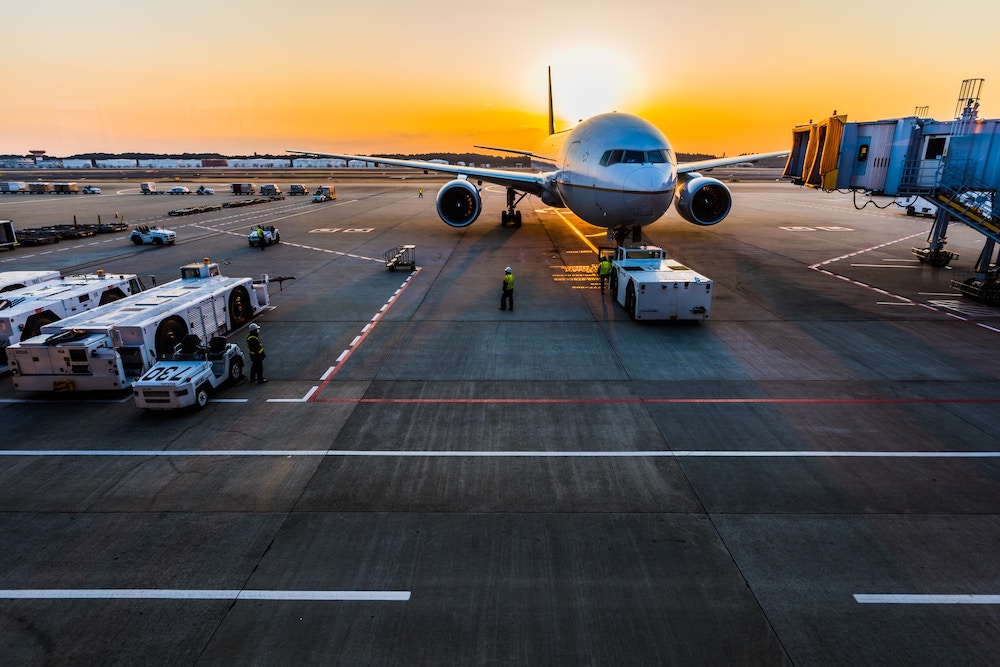Get ready to soar through the skies and embark on a journey unlike any other. In this comprehensive guide, we will take you on an exhilarating adventure into the world of revolutionary flight. From the early days of aviation to cutting-edge technological advancements, we’ll explore how air travel has evolved over time and delve into the exciting possibilities that lie ahead.
The History and Evolution of Air Travel
From the first courageous pioneers who dared to dream of flying, to the modern marvels that grace our skies today, the history of air travel is a tale filled with innovation and determination. It all began in the late 18th century when inventors like George Cayley and Sir Hiram Maxim conceptualized designs for human flight. However, it wasn’t until December 17, 1903, that Orville and Wilbur Wright achieved powered flight with their iconic aircraft.
The early years of aviation were characterized by rapid advancements as aviators pushed boundaries and explored new possibilities. In the 1920s and ’30s, commercial airlines emerged, connecting people across vast distances like never before. The introduction of jet engines in the mid-20th century revolutionized air travel once again, making long-haul flights faster and more efficient than ever.
As technology continued to advance at an astonishing pace throughout the latter half of the 20th century, so too did our ability to navigate the skies. Innovations such as automated cockpit systems, improved safety measures, and more fuel-efficient engines transformed air travel into a safer and more accessible mode of transportation for millions worldwide.
Advancements in Technology and Design
In the ever-evolving world of air travel, technology and design play a pivotal role in shaping the revolutionary flight experience. From the early days of aviation to modern aircraft, there have been significant advancements that have transformed how we soar through the skies.
One of the key technological breakthroughs is undoubtedly the development of more fuel-efficient engines. These engines not only reduce carbon emissions but also enhance operational efficiency, allowing airlines to offer more sustainable flights. The use of advanced materials like composites has made aircraft lighter and stronger, contributing to improved performance and increased passenger comfort.
Furthermore, cutting-edge avionics systems have revolutionized navigation and communication within the cockpit. Pilots now have access to real-time data about weather conditions, flight paths, and aircraft performance, enabling them to make informed decisions for a smooth journey.
Design innovations have also played a crucial role in enhancing passenger experience onboard. Spacious cabins with ergonomic seating arrangements provide greater comfort during long-haul flights. State-of-the-art entertainment systems ensure passengers can enjoy their favorite movies or TV shows while cruising at 30,000 feet above ground.
The combination of these technological advancements and innovative designs is truly transforming air travel into a revolutionary flight experience. Passengers can look forward to seamless journeys with enhanced comfort features while airlines benefit from improved operational efficiencies leading to reduced costs.
Features of the Revolutionary Flight Experience
Seamless Check-in Process:
Gone are the days of long lines and tedious check-in procedures. The revolutionary flight experience begins right from the moment you book your ticket. With advanced technology, airlines now offer seamless online check-ins, allowing passengers to save time and breeze through the airport.
Smart Cabin Design:
Step inside the aircraft, and you’ll be greeted by a smart cabin design that prioritizes passenger comfort and convenience. The seats are ergonomically designed, providing ample legroom and adjustable features for individual preferences. The cabin also boasts spacious overhead compartments to accommodate carry-on luggage easily.
Cutting-Edge Entertainment Systems:
No more dull moments during your flight! The revolutionary flight experience offers cutting-edge entertainment systems that cater to every passenger’s preferences. From personalized touchscreen displays with a vast selection of movies, TV shows, music, games, and even live streaming options – there’s something for everyone to enjoy throughout their journey.
Enhanced Connectivity:
Say goodbye to being disconnected from the world while flying! Thanks to advancements in onboard Wi-Fi technology, passengers can now stay connected throughout their flight. Whether it’s catching up on emails or video-chatting with loved ones on social media platforms – staying connected has never been easier.
Improved Dining Options:
Gone are the days of uninspiring airplane food! Airlines have revolutionized inflight dining experiences by offering an array of gourmet meals prepared by renowned chefs. Passengers can indulge in delectable dishes tailored to suit different dietary requirements or simply savor a fine glass of wine at 40,000 feet above ground.
State-of-the-Art Lavatories:
Even when nature calls during your flight, you’ll be pleasantly surprised by state-of-the-art lavatories that prioritize cleanliness and functionality. Equipped with touchless fixtures and high-tech amenities such as automated faucets and self-cleaning toilets – using these facilities is no longer a hassle but rather a unique experience.
Revolutionary flight experiences have truly redefined air travel,
Benefits for Passengers and Airlines
Passengers and airlines alike are set to reap numerous benefits from the revolutionary flight experience. One of the primary advantages for passengers is the significant reduction in travel time. With advancements in technology and design, flights will be able to reach their destinations faster than ever before. This means less time spent sitting on a plane and more time exploring new destinations or getting back home.
In addition to shorter travel times, passengers can also expect a more comfortable journey. Revolutionary flights will feature state-of-the-art cabin designs that prioritize passenger comfort. From spacious seating arrangements to improved air quality, every aspect of the flight experience has been carefully considered with passenger well-being in mind.
For airlines, these revolutionary flights offer opportunities for improved operational efficiency and cost savings. The use of cutting-edge technology enables better fuel efficiency, reducing both environmental impact and expenses associated with fuel consumption.
Potential Impact on the Aviation Industry
As revolutionary flight continues to shape the future of air travel, its potential impact on the aviation industry is immense. With advancements in technology and design, this new era of flying promises to bring about significant changes for both airlines and passengers alike.
One of the key areas where we can expect to see a major impact is in terms of efficiency. Revolutionary flight aims to streamline processes such as check-in, security screening, and boarding, using cutting-edge technologies like biometrics and artificial intelligence. This will not only reduce waiting times but also enhance overall operational efficiency for airlines.
Furthermore, by leveraging advancements in connectivity and data analytics, revolutionary flight has the potential to transform airline operations through real-time monitoring of aircraft performance metrics. This proactive approach could result in better maintenance scheduling and reduced downtime for planes – ultimately benefiting both airlines’ bottom lines as well as passenger satisfaction levels.
Challenges and Limitations
While revolutionary flight offers numerous benefits and exciting possibilities, it is not without its challenges and limitations. One key challenge is the high cost of implementing new technology and design advancements. Developing and maintaining advanced aircraft can be a costly endeavor for airlines, which may limit the widespread adoption of these innovations.
Additionally, there are environmental concerns associated with air travel that cannot be ignored. Despite efforts to reduce carbon emissions through more fuel-efficient engines, airplanes still contribute significantly to greenhouse gas emissions. Finding sustainable solutions for air travel will be crucial moving forward.
Regulatory hurdles must also be overcome before revolutionary flight becomes fully realized. Governments around the world need to establish clear guidelines regarding issues such as airspace management, pilot training requirements for autonomous flights, and privacy regulations related to onboard data collection.
Despite these challenges and limitations, innovative thinkers in the aviation industry continue pushing boundaries to overcome obstacles in pursuit of revolutionary flight experiences that benefit both passengers and airlines alike.
Future Possibilities for Air Travel
The revolutionary flight experience has already transformed the way we travel, but what does the future hold? With advancements in technology and design continuing to push boundaries, there are exciting possibilities on the horizon.
One area of focus is sustainability. As concerns about climate change grow, airlines are exploring ways to reduce their carbon footprint. This includes developing more fuel-efficient aircraft and investing in alternative fuels. In the future, we may see flights that produce fewer emissions and have a lesser impact on the environment.
Another area ripe for innovation is passenger comfort. Airlines are constantly looking for ways to enhance the flying experience, from improved seating arrangements to personalized entertainment systems. In the future, we may see even more luxurious cabins with innovative amenities designed to make long-haul flights a breeze.


